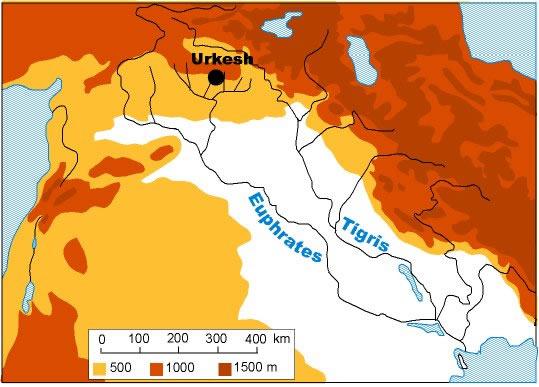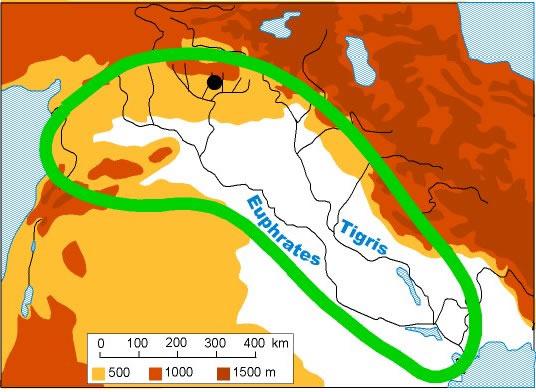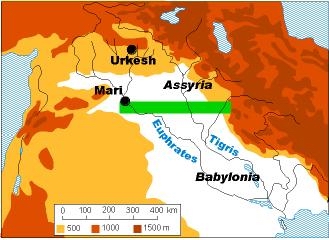Mesopotamia
A bird's eye view of Mesopotamian history will help place the site of Urkesh in the proper perspective.The word used to define the region in cultural and geo-political terms is "Mesopotamia" - a late Greek word that literally means "The land between the rivers". It refers to the lower basins of the Tigris and the Euphrates, in lighter color on our map to the right.
Back to top

Syro-Mesopotamia
During the first one and a half millennium of its history, from about 3000 until 1500 B.C., Mesopotamia was closely linked to the western area. We call this larger region "Syro-Mesopotamia".This is the period when Urkesh was important. So Urkesh belongs fully in what may be called the Syro-Mesopotamian region and the Syro-mesopotamian period.
Back to top

3200-2350: Early city-states
The first millennium of recorded history is characterized by the establishment of numerous city-states that share the same basic urban culture throughout Syro-Mesopotamia, across ethnic boundaries. Their territory remains limited to the urban hinterland, without any real aggregation of several cities under the control of a single capital. This is the period when Sumerian culture flourished in the south. Urkesh is the northernmost of these cities.Back to top

2350-2100: The imperial experiment
The two rivers provide the impetus for the first vast territorial expansion that subsumes not only many cities, but also diverse cultures under its political control. In this sense this is the first political entity that we can properly call "empire". It is the empire of Akkad. Mesopotamia is now perceived as a single entity unfied along the two vertical axes of the Euphrates and the Tigris. Urkesh is one of the few city-states to escape domination, and is instead allied with the king of Akkad, Naram-Sin.Back to top

2100-1600: The north-south realignment
After the dissolution of the empire of Akkad, a whole new realignment of geo-political realities takes place. The longitudinal orientation marked by the two great rivers is replaced by two new macro-regional entities that are defined latitudinally. The north develops into what comes to be known as Assyria, and the south into Babylonia. Urkesh is now a minor local kingdom, whose kings are foreigners installed by the king of Mari.Back to top

1500-1300: The Mittani kingdom
UNDER CONSTRUCTIONBack to top